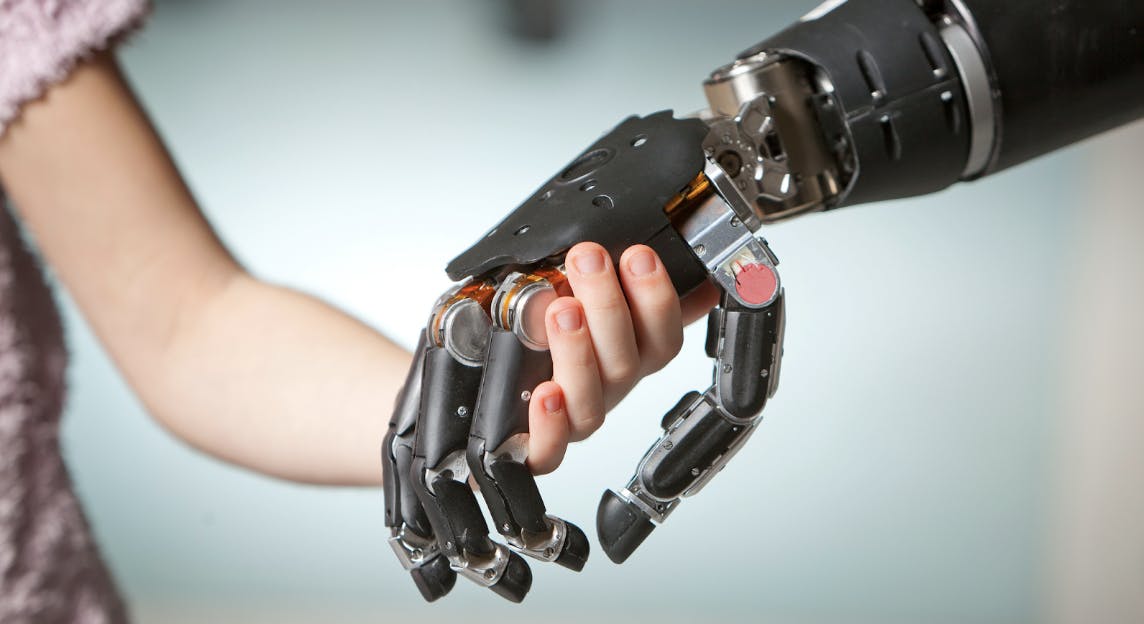TL;DR Science: Prosthetics
By Srishti S.
December 15, 2023 · 3 minute read
Biology
Medicine
Biological Engineering
Mechanical Engineering
Exploring the world around us requires us to use our five senses, but what if one of those senses was made impossible to use? Most of us could never imagine living life without our hands, arms, legs, or feet, but this is a reality for so many around the globe. Prosthetics are a means for those people to improve their quality of life, but what goes into these devices and what implications (both positive and negative) do they pose for users? Let’s take a deeper dive into the world of prosthetic devices.

What are prosthetic devices?
The first thing to understand is that prosthetic devices themselves are actually called prostheses. A prosthesis is a manufactured device that is used to accomplish one of two things: either to replace a missing part of the body, or to make a certain part of the body function better. The reasons for needing a prosthesis are manifold, from missing a limb at birth to requiring amputation as a result of injury or conditions like diabetes or certain cancers. Some common examples of prosthetic devices include dentures and artificial limbs like the one in the picture above!
How do prostheses work?
There are a few main types of commonly used prosthetic devices. Prostheses usually fall under one of three categories: body-powered, motor-powered, and myoelectric-powered.
Body-powered prosthetics are controlled by the movement of the limbs. Oftentimes, a cable connecting the shoulder to a prosthetic hand will activate the prosthesis upon movement.
Motor-powered prosthetics are usually activated by buttons or switches that allow the prosthesis to move and hold onto objects like a human hand would.
Myoelectric-powered prosthetics are a bit different from the other two types and show just how far science has advanced over the years. The activation occurs through electrodes that are placed on the human skin and send electrical signals to the prosthesis based on muscle movements. This has made movement much more convenient for many as the combined implementation of human and electric processes allows for a much more holistically effective product.
Modern-day advancements have also led to numerous breakthroughs in bionic prosthetics, similar to what you’d see in the popular Disney XD show Lab Rats. Previous prostheses, although functional, have not been incredibly convenient for users and have still posed various limitations when it comes to movement and dexterity. However, up and coming bionic prosthetics built with more complex sensors and processors have much more scope for responding to human impulses and allow for users to be much more precise with their movements.
TL;DR:
Movement is an essential part of being human, and prosthetic limbs make that movement possible for millions around the globe. The concept behind these prostheses seems incredibly complex but is actually quite simple at its core: to create something to better human life, it’s essential that you put yourself in the shoes of that human and experience the meaning of movement yourself. Science has come a long way over time, and prosthetic devices show much promise for generations to come.
Here is a great video about the future of prosthetics and real life stories if you want to learn more! https://www.youtube.com/watch?v=GgTwa3CPrIE
Sources:
https://www.healthdirect.gov.au/prostheses
https://www.freedomprosthetics.com/how-do-prosthetic-limbs-work/
https://newsinhealth.nih.gov/2018/08/bionic-movements
Image Sources:
Did you enjoy this article?
About The Author
About the Author: Srishti Swaminathan is a high school junior interested in STEM and writing. She enjoys reading, listening to music, and watching movies. If you have any comments or questions regarding this article, feel free to contact her at srishti@sciteens.org.